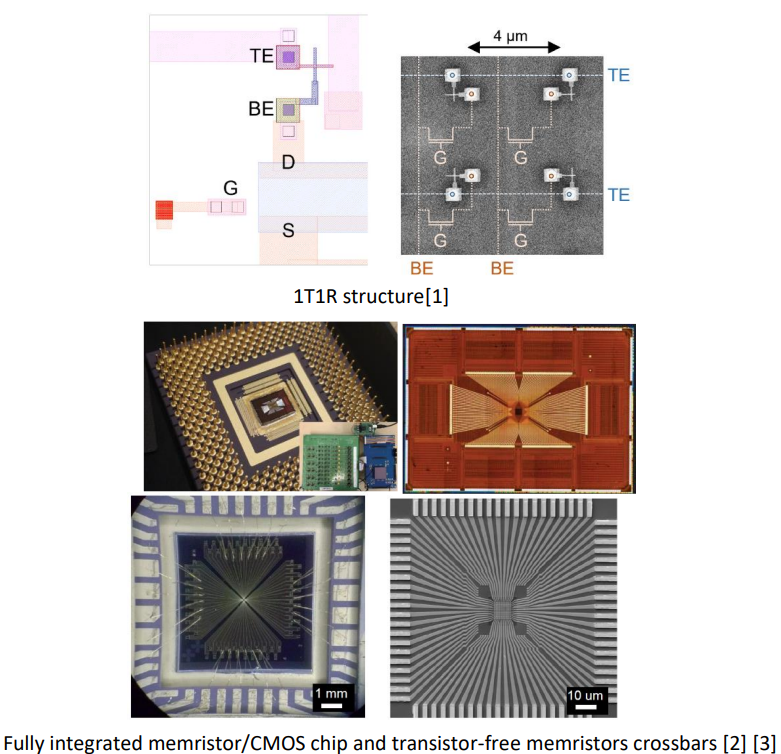Design and fabrication of 1T1R (one transistor one ReRAM) crossbars for neuromorphic computing
Compared to computers, the human brain is incredibly energy efficient. Scientists are therefore exploring how the brain and its interconnected neurons function, for inspirations to devise innovative computing technologies. These brain-inspired computing systems has been predicted to be more energy efficient than conventional ones, as well as better at performing machine-learning tasks. Also, in conventional computing systems, processor-to-storage data transfer operations consume significant amounts of energy.
Artificial neurons, such as memristors, can merge data storage and processing in a single electrical component. Memristors, with good CMOS compatibility, can offer high energy and performance efficiency compared to any conventional computing systems & techniques. We are currently developing new materials for memristors and 1T1R crossbar arrays for Machine learning. One transistor one memristor(s) (1T1R) and Complimentary Resistive Switching devices can solve the chronic sneak path current problem in the existing memristor passive crossbar arrays with higher reliability. The research and development of such a 1T1R (one transistor one ReRAM) crossbars system will contribute significantly to the advancement of the field of neuromorphic technology, and will allow to explore new potential applications.
[1] S.I. Yi, J.D. Kendall, R.S. Williams, S. Kumar, Activity-difference training of deep neural networks using memristor crossbars, Nature Electronics, (2022).
[2] M. Prezioso, F. Merrikh-Bayat, B.D. Hoskins, G.C. Adam, K.K. Likharev, D.B. Strukov, Training andoperation of an integrated neuromorphic network based on metal-oxide memristors, Nature, 521 (2015) 61-64.
[3] F. Cai, J.M. Correll, S.H. Lee, Y. Lim, V. Bothra, Z. Zhang, M.P. Flynn, W.D. Lu, A fully integrated reprogrammable memristor–CMOS system for efficient multiply–accumulate operations, Nature Electronics, 2 (2019) 290-299.
